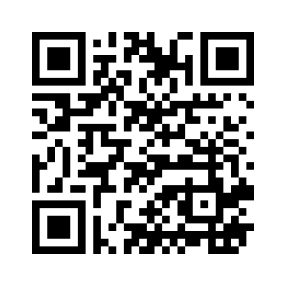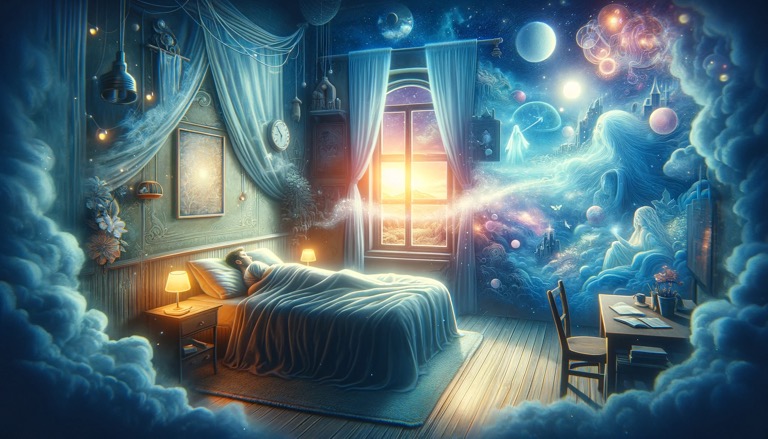Have you ever dreamed about someone you haven’t thought of in years, only to bump into them the next day? Or perhaps you dreamed of something unusual that later appeared in your waking life? These strange coincidences connect our dream world with reality. They’ve fascinated me for years. I’m not alone in this curiosity. The phenomenon has a name: synchronicity.
The Mysterious Dance Between Dreams and Reality
Last summer, I had a vivid dream about a blue hummingbird. It hovered near a red flower I couldn’t name. The image was so striking that I noted it in my dream journal. Three days later, I visited a friend’s garden for the first time. I froze mid-conversation. There, just a few feet away, was a blue hummingbird. It was drinking from red cardinal flowers. I had never seen either the bird or the flower in real life before.
Was this mere coincidence, or something more meaningful? The Swiss psychiatrist Carl Jung would likely suggest the latter.
Jung coined the term “synchronicity” in the 1920s. He used it to describe “meaningful coincidences.” These are events connected not by cause and effect but by significance. According to Jung, these events occur in two places at once. They happen in the physical world and in our internal psychological realm. This creates bridges between our conscious and unconscious minds.
What makes these dream-reality crossovers so compelling isn’t just their statistical improbability, but the emotional resonance they trigger within us. They feel significant, as if they’re trying to tell us something.
The Science Behind the Mystery
While skeptics might dismiss synchronicity as simple confirmation bias or the brain’s tendency to find patterns in randomness, recent research in neuroscience offers some intriguing possibilities.
Dreams occur primarily during REM sleep, when our brains process emotions and consolidate memories. During this state, our brains make neural connections that our waking, logical minds might never consider – mixing memories, emotions, and sensory information into new combinations.
Some neuroscientists have an interesting theory. They suggest our dreaming brain picks up subtle cues that our conscious mind misses. Perhaps that blue hummingbird had been in my peripheral vision days earlier. Or maybe I had seen cardinal flowers in a magazine without consciously noticing them.
Dr. Patrick McNamara studies sleep cognition. He proposes dreams may serve as “predictive processing.” This is the brain’s attempt to simulate future scenarios. It uses fragments of information it has already gathered. In this view, synchronicity occurs when these simulations actually match with reality.
Cultural Perspectives on Dream Synchronicity
The idea that dreams can foreshadow or connect to waking reality isn’t new. Indigenous cultures worldwide have long viewed dreams as gateways to hidden knowledge. For the Aboriginal peoples of Australia, dream-time represents an alternate reality as valid as the waking world. Many Native American traditions include practices for seeking guidance through dreams, believing that dreams allow access to wisdom beyond ordinary perception.
In ancient Egypt, dream temples served as places where people would sleep to receive divine messages or healing. Greek philosophers like Aristotle and Plato debated the nature of dreams, with some proposing that dreams could reveal truths about reality or predict future events.
These diverse cultural perspectives suggest a universal human experience. We sense that our dreams connect to our waking reality. This connection often transcends simple explanation.
Personal Navigation: Using Synchronicity as a Compass
Beyond the fascinating philosophical questions they raise, these dream synchronicities can serve a practical purpose in our lives. They often arrive at pivotal moments, offering guidance when we face difficult decisions or transitions.
After my hummingbird experience, I found myself researching native plant gardens and eventually volunteered at a local conservation project. This led to meaningful friendships and a renewed sense of purpose during a period when I’d been feeling particularly directionless. The synchronicity didn’t predict this path – it invited me onto it.
Many people report similar experiences. Some dream of a forgotten childhood place. Then they receive a career opportunity in that location. Others dream of a departed loved one. Later they discover something that person left behind. These experiences feel like gentle nudges. They come from our deeper selves. They point toward paths we might otherwise miss.
Keeping Track: The Dream Journal Practice
If you’re curious about exploring potential synchronicities between your dreams and waking life, keeping a dream journal is essential. The practice is simple but requires consistency:
- Keep a notebook and pen by your bed
- Record dreams immediately upon waking, before they fade
- Note emotions, colors, symbols, and any unusual elements
- Review your entries regularly, looking for connections to daily life
This practice has transformed my relationship with dreams. What once seemed like random neural noise now feels more like a conversation with a wiser part of myself. Even when synchronicities don’t appear, the increased attention to my dream life has enhanced my creativity and emotional awareness.
The Skeptic’s View: A Healthy Perspective
While exploring synchronicity between dreams and reality can be enriching, maintaining a balanced perspective is important. Our brains excel at finding patterns, sometimes seeing connections where none exist. This ability – called apophenia – helped our ancestors survive (better to mistake a shadow for a predator than vice versa), but it can also lead us astray.
I’ve learned to hold my dream synchronicities lightly – appreciating their mystery without becoming obsessed with finding meaning in every dream element. Some dreams are simply processing the day’s events or working through subconscious concerns. Not every dream carries profound significance.
That said, I’ve found there’s a qualitative difference between everyday dreams and those that later connect with waking reality. The latter tend to have a particular clarity and emotional resonance that sets them apart.
Collective Dreaming: Synchronicity Across Minds
Perhaps the most fascinating frontier in this exploration involves shared dream experiences. Throughout history, people have reported instances where multiple individuals dream similar content independently, especially regarding major events or shared connections.
After the 9/11 attacks, something unusual emerged. The Association for the Study of Dreams collected hundreds of reports. People described dreaming of airplanes, tall buildings, or disasters. These dreams occurred in the days before the tragedy. These could be examples of retrospective bias. Yet the volume and specificity of reports remains intriguing.
On a smaller scale, I’ve experienced this phenomenon within my own family. My sister and I once realized we’d had nearly identical dreams about our childhood home on the same night, despite living in different countries. We both dreamed of finding a hidden room we’d never seen before, filled with forgotten belongings. A week later, our parents called to say they’d discovered old family photos and memorabilia while renovating a previously sealed attic space.
Living with Mystery: Embracing the Unknown
After years of recording my dreams and noting their occasional surprising connections to waking life, I’ve come to appreciate how these experiences have enriched my perspective. They’ve invited me to hold reality more lightly – to recognize that perhaps the boundaries between imagination and the physical world are more permeable than we typically assume.
Whether you view synchronicity as evidence of a collective unconscious, quantum entanglement of consciousness, or simply the beautiful coincidences of a random universe, these experiences invite us to wonder. In a world increasingly dominated by algorithms and predictability, dreams remind us that mystery still exists.
The next time you experience a strange overlap between your dreams and reality, consider pausing to appreciate it. What feels significant often is – not necessarily because the universe is sending personalized messages, but because our recognition of these moments connects us to something deeper within ourselves.
In the space between sleeping and waking, between imagination and reality, we touch the edges of what it means to be fully human: to find meaning in mystery, to sense connection across seemingly separate realms of experience, and to wonder at the extraordinary complexity of our conscious and unconscious minds.






